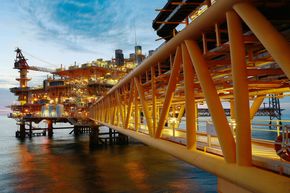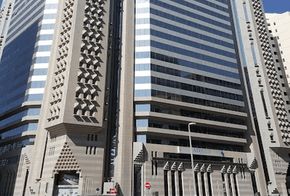- February 12, 2025
- Posted by: Velosi Author
- Categories: Asset Integrity, Insights

Introduction to Reliability-centered maintenance (RCM)
Reliability-centered maintenance (RCM) offers a well-structured framework to enhance maintenance strategies and avoid disruptive expenses. The oil and gas industry works in a critical environment, as unexpected downtimes in the system incur financial downsides accompanied by environmental and safety risks. Key aspects in this challenging industry are continuous asset operability and operational excellence. Combining Reliability-Centered Maintenance (RCM) with VAIL-Plant® EIRMS leads to exceptional operational efficiency.
Understanding the Fundamentals of RCM in The Oil & Gas Industry
RCM provides a well-established framework for developing maintenance strategies to avoid disrupting costs according to the significance of an asset’s functions. The system goes past traditional breakdown maintenance by concentrating on mitigating potential failures. Velosi’s extensive VAIL-Plant® software integrates multiple RCM & FMECA-based modules such as PSVMS, LEMS, WIMS, CPMS & FPIMS.
The oil and gas business constantly refers to reliability-centered maintenance as an important technique for safety, environmental protection, and the continuous running of equipment under extremely harsh conditions and in the most remote locations. Reliability-centered maintenance is a systematic methodology for optimizing the maintenance process to enhance reliability, safety, and cost-effectiveness.
Reliability-Centered Maintenance (RCM) is a systematic methodology that optimizes maintenance for improved system reliability, safety, and cost-effectiveness. Here are its key principles:
- Maintain System Performance
RCM ensures that the equipment shall properly function as it was meant to—a condition that guarantees the better reliability of the system, instead of just correcting failures.
- Identify and Rank Failure Modes
RCM differentiates failure modes, identifies several critical ones, and ranks them based on how much these failures impact safety, operational failure, cost, and environment.
- Evaluate the Effects of Failure and Where it Leads
The next stage helps in prescribing a mix of proper timing and proper techniques for maintenance that will ensure that one does not incur any unwanted repair work and hazardous situations.
- Apply the Appropriate Maintenance Strategy
Dynamic blending of preventive, predictive, condition-based, and run-to-failure maintenance depending upon how backloading one mainly wants to be, for the sake of maximizing performance.
- Optimize Cost with Reliability
RCM allows one not to include unwanted maintenance; hence, it saves on repair budgets while simultaneously enhancing uptime.
- Promote Safety and Compliance
RCM reduces the odds of failures that lead to incidents, thereby helping organizations comply with safety regulations.
- Continuous Improvement
Incorporating RCM helps businesses get better by improving their capability to change maintenance strategies based on real-time feedback and analytics.
The Reliability-Centered Maintenance (RCM) Process in Oil & Gas: Integrating VAIL-Plant® EIRMS
VAIL-Plant® EIRMS (Electrical, Instrumentation, & Rotary Management System) provides a centralized platform to streamline and enhance every step of the RCM process:
- Utilizing the documentation and historical data to identify the critical functions of each asset, from pumps and valves to complex control systems.
- Failure Mode, Effects, and Criticality Analysis (FMECA) Conduct thorough analyses with VAIL-Plant®, using its data analytics capabilities to identify patterns, trends, and potential failure modes. VAIL-Plant® helps track failure modes and their effects over time, improving the accuracy of future analyses.
- Choose the most effective maintenance tasks based on the FMECA results and recommendations. This custom-built software can schedule and track preventive, predictive, and condition-based maintenance tasks.
- Assist in executing maintenance tasks efficiently using a work order management system. Real-time updates and data capture ensure accurate record-keeping.
- Continuously monitor performance metrics and analyze data within reporting and analytics dashboards. The system pinpoints improvement areas and enhances your RCM procedure through data-driven insight.
Benefits of Reliability-Centered Maintenance (RCM) for the Oil & Gas Industry
- Less Downtime; More Production:
By executing proper maintenance strategies, unnecessary shutdowns can be avoided; hence, production can be maximized.
- Enhanced Safety; Reduced Environmental Impact:
Identifying and controlling possible hazards helps reduce the chances of accidents and spills.
- Reduced Maintenance Cost:
Data-driven decisions ensure the optimum allocation of resources, avoiding expenditure on unnecessary maintenance.
- Prolonged Asset Life:
Condition-based maintenance extends the useful life of critical equipment.
- Enhanced Governance:
VAIL-Plant® tracks maintenance activities and produces necessary reports for compliance.
VAIL-Plant® EIRMS: Key Features Supporting Reliability-Centered Maintenance (RCM)
- Asset Register and Hierarchy: Centralized repository of asset information.
- Work Order Management: Streamlines maintenance workflows.
- Predictive Maintenance Capabilities: Uses data analytics to predict failures.
- Condition Monitoring Integration: Monitors equipment health.
- Reporting and Analytics Dashboards: Visualizes KPIs and identifies trends.
Conclusion: RCM and VAIL for Operational Excellence
To conclude, the industry faces various challenges. Reliability-Centered Maintenance (RCM) combined with VAIL-Plant® EIRMS offers a powerful solution for maximizing asset reliability, reducing downtime, and improving safety. By implementing this data-driven approach, oil and gas companies can maintain operational excellence, optimize costs, and ensure a sustainable future.
Learn more about how VAIL-Plant® EIRMS can transform your maintenance strategies.
Stay connected for more blogs!
Please contact us for more information and assistance.




